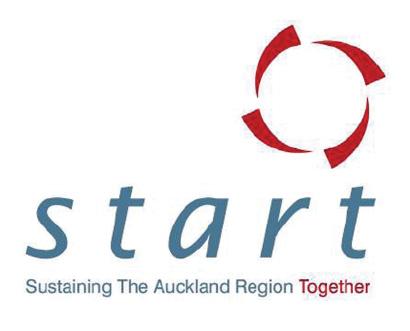
2 minute read
Figure 3.33 The START Logo
torial authorities in the region. The aim of the forum is to develop and implement a strategy for managing the eff ects of growth.
Governments at every level recognize the need for a collaborative, regional process
Advertisement
The interconnectedness of national and local Auckland issues (such as housing and education) with growth and innovation and the major required investments (particularly in land transport) have created complex and diffi cult issues among multiple authorities. Despite Auckland’s importance to the New Zealand economy and the areas of common interest, such as transportation and energy provision, the national government did not initially play a close role in directing regional and local government planning. Concern emerged that, without agreement on an overarching regional strategy and framework, decision making in the region could become ad hoc and adversarial if each stakeholder tried to have a say from a narrow perspective and without viewing the region as a whole. As a result, there was a clear need for coordinated strategic planning across the Auckland Region to ensure that Auckland would be able to remain competitive in today’s globalized world. The response involved a process undertaken in 2001 to prepare a regional growth strategy that aimed to provide a vision of what Auckland could be like in 50 years. This was backed by the adoption of a spatial growth plan and a legislatively binding limit on the extent of the metropolitan urban area.
In parallel with the work on a regional growth strategy, a three-year Auckland Sustainable Cities Programme was initiated in 2003. In 2006, as a result of the program, the eight local authorities (Auckland City, Auckland Region, Franklin District, Manukau City, North Shore City, Papakura District, Rodney District, and Waitakere City), at the instigation of a forum of territorial chief executives, engaged with the central government to develop a long-term sustainability framework. Initially called START (Sustaining The Auckland Region Together), the approach represented an attempt to evaluate how forces of change (such as climate change, global resource depletion, and changing demographics) might impact Auckland and how the local and regional councils and the central government might align their eff orts and create strategic directions to ensure the region’s longterm success (fi gure 3.33).1 The engines of START included the need to develop resilient and adaptive systems able to respond (1) to persistent pressures over short and long time horizons with no obvious alternative solutions and (2) to many vested interests with apparently irreconcilable demands.
Making a START: Gathering information
The START working group developed a prototype framework with a cascading set of deliverables, including a vision, goals, initial foundation, process principles, initial themes, and some potential responses (which included catalyst projects, long-term sustainability goals, and the development of indicators to measure progress). Critical to progressive development was consideration of the forces that would shape Auckland’s future over the next 100 years. Also signifi cant to the development of the framework was the involvement of expert groups that included academics and experts from the business and community sectors, who, through facilitated
Figure 3.33 The START Logo in the Auckland Region
Source: ARC (2006).





